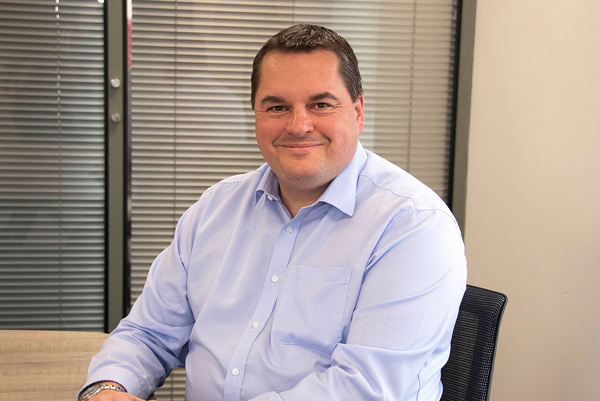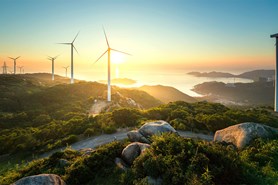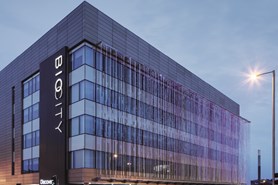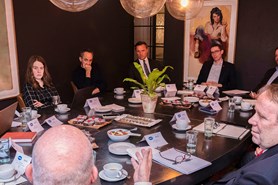In our recent webinar, "Delivering sustainable infrastructure in an uncertain world," our experts across rail and energy discussed ways the construction industry can hold itself accountable to delivering better and more sustainable infrastructure.
We saw some great and pertinent questions asked during the session, and we have rounded up our answers to some of them below.
For our full insight, check out our Energy & Infrastructure Report 2021.
We managed to "solve" the problem about the hole in the ozone layer. Is climate change just the same kind of problem with the same kind of likely solution? If we "name and shame" the worst oucome countries" more (and commend the best) following proper independent analysis, would this put sufficient pressure on governments?
This is an interesting point and lessons learned can be applied to climate change from tackling ozone layer thinning – particularly listening to scientific warnings, emphasising collaboration, and taking action globally. Over the coming decades, the ozone layer is expected to recover due to the drastic reduction in particular gases, including chlorofluorocarbons (CFCs). In 1987, the United Nations established the Montreal Protocol to regulate gases – the only UN treaty in history to achieve universal ratification. We hope to see similar decisive action to limit the devastating impacts of climate change.
How much will driverless cars contribute to optimising transport infrastructure and reducing carbon output? When will all adults have access to truly driverless cars?
Thoughts on this are mixed. A study published in Nature Climate Change showed that greenhouse gas emissions per mile were lowest with autonomous electric vehicles. More specifically, a fleet of driverless electric taxis showed emissions 63 to 82 percent lower than a future privately-owned hybrid car, and 90 percent lower than a current petrol-driven private car. Nearly half of the savings were associated with intelligent planning of journeys, e.g. smaller taxis for one or two people.
A BBC Future article hinted at challenges ahead for adopting driverless cars, not the least of which includes a change in human behaviour to encourage widespread car-pooling. A University of Michigan study in 2018 found that autonomy could actually increase a vehicle’s energy demands: more hardware would be needed for the car to navigate and interact with advanced cameras, lasers, and other sensors, not to mention act on the large volumes of data created. This adds weight and more hardware to a car’s exterior could make it less efficient at cutting through – both of which would add to the energy consumed.
What do you think the long-term impact of COVID-19 will be on the ability to meet COP26 and other climate targets across new and existing projects around the globe?
Governments across the globe have a huge opportunity to use recovery from the pandemic as a springboard to meet COP26 and other climate targets. Our report goes into more detail on this but the IMF indicates that increasing public investment by 1 percent of GDP could strengthen confidence in recovery and boost GDP by 2.7 percent.
The next ten years will make or break our efforts to limit warming to 1.5 degrees – any higher than this risks catastrophic effects. We need infrastructure investment to meet COP26 commitments and other climate change targets, which include transitioning to net zero carbon, building resilience to the effects of climate change, and stimulating economic recovery.
From the industry side, who should be leading the drive for sustainable development and should the Charterships get more involved at government level?
The whole industry needs to play a part in driving for sustainable development. The transition is a massive ordeal that will require a great deal of collaboration.
Articles from the New York Times and Bloomberg News suggest that the scarcity of skilled works poses a challenge to the $1.2 trillion U.S. infrastructure plan, as do immediate construction material shortages and ongoing capacity issues of steelworkers, mills, etc. The UK shares similar concern, with ONS data indicating 38,000 construction industry vacancies between May-July 2021, the highest in 20 years. Labour is a long-term issue for the construction industry – visibility of a committed pipeline for investment will allow the industry to plan and invest in attracting talent, developing skills, and adopting technology to make planning and delivery more efficient.
What should be our approach be to projects highly criticised for their unsustainability, such as CPK (Central Communication Hub) in Poland?
Governments are balancing multiple strands – achieving climate targets but also growth and futureproofing.
Creating hubs allows some opportunities for sustainability, such as investment in other transport modes as well as aviation. With CPK, 1,600km of railway will be built alongside the hub, which will offer improved connectivity and a low-carbon form of transport. A 140km stretch of high-speed rail will be constructed, effectively creating a new connection between Warsaw, STH, and Łódź, improving journey times and consequently increasing rail use. In the UK, rail accounts for 10 percent of total journeys but only 1.4 percent of total transport emissions, making it an environmentally efficient way to travel.
Hubs will also support airlines as they transition to ‘hub and spoke models’ where short- and mid-haul flights transfer passengers to the hub airport that longer-haul flights depart from. This helps improve efficiency and reduce emissions rather than multiple long-haul flights departing to the destination.
It is important for large scale projects to consider climate targets and ascertain demand to justify the project and use resources as efficiently as possible. Where possible, existing infrastructure should be used or upgraded, and assets should be as energy-efficient as possible.

Dean Purvis
Global Head of Infrastructure
- Dean.Purvis@gleeds.com
- +44 (0)115 9778220



